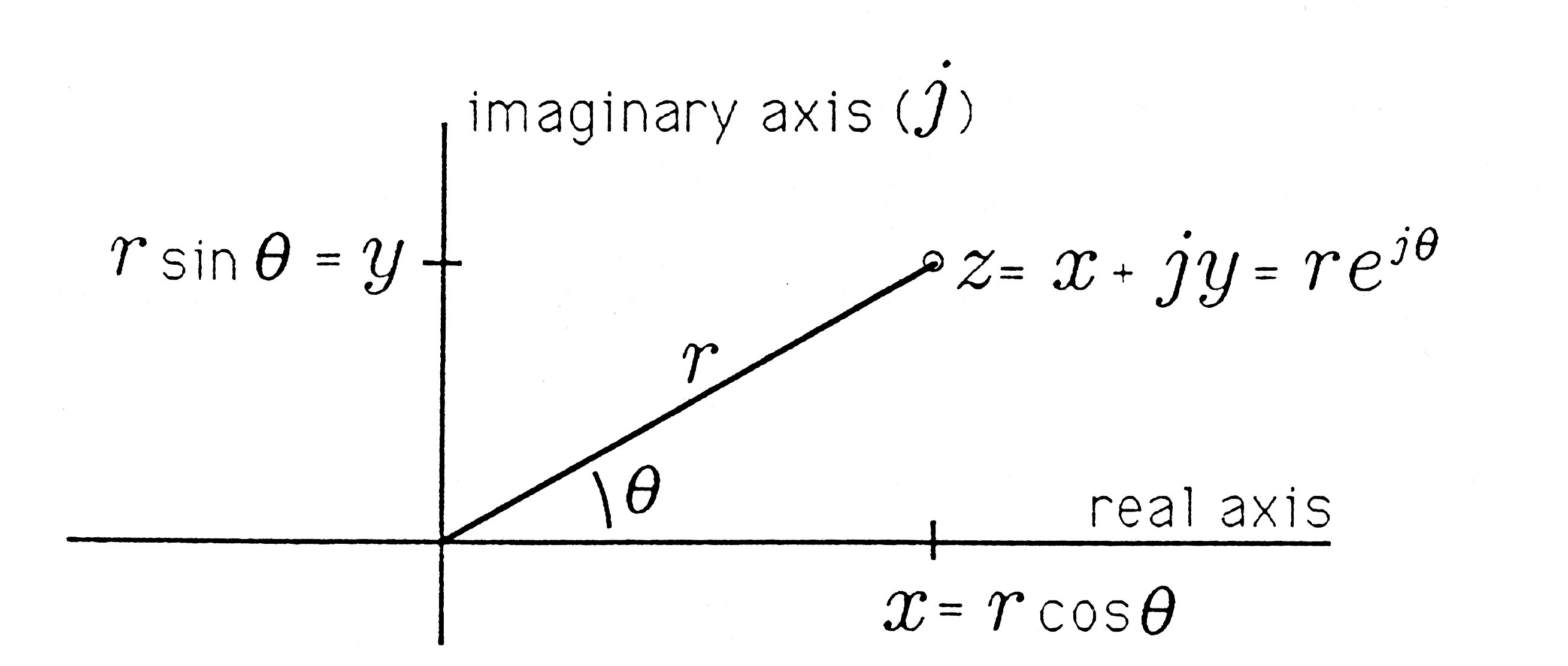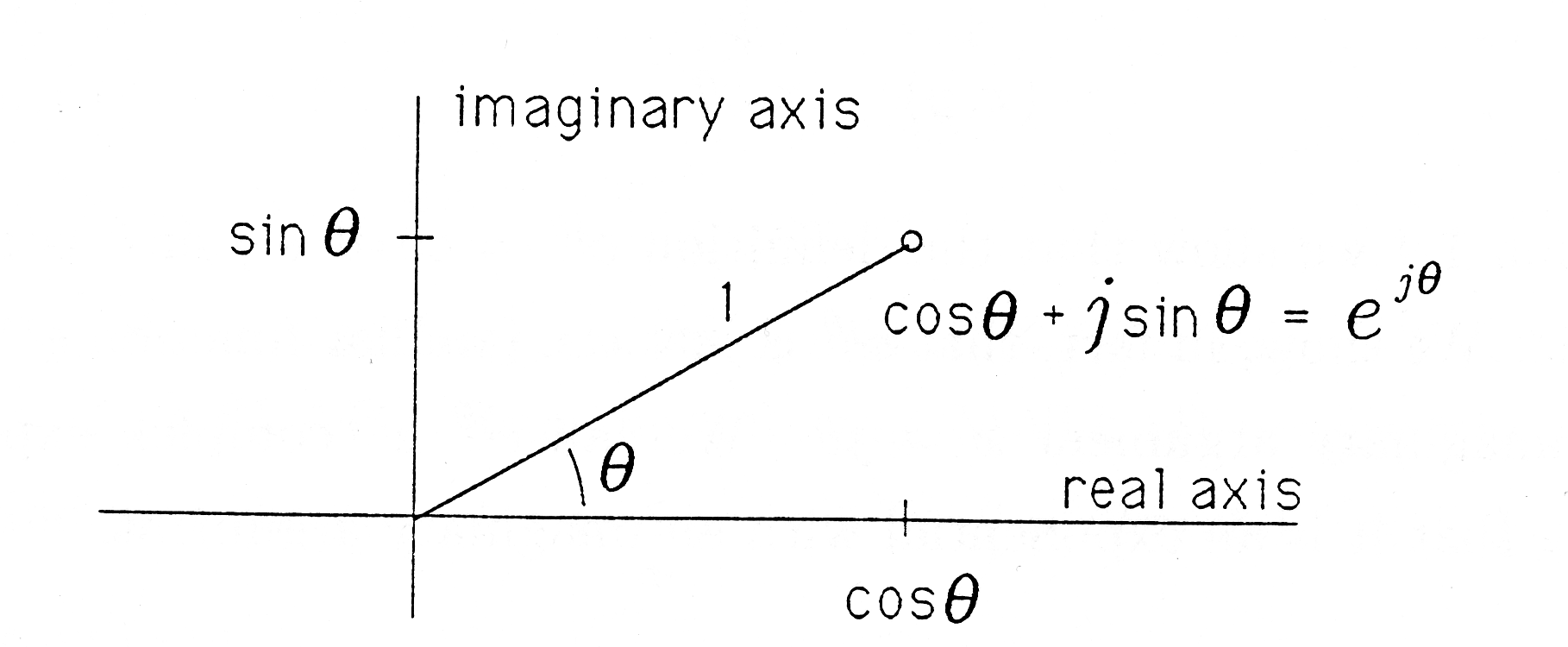Chapter 1. Complex Numbers
1.1. Complex Numbers: Introduction*
This module is part of the collection, A First Course in Electrical and Computer Engineering. The LaTeX source files for this collection were created using an optical character recognition technology, and because of this process there may be more errors than usual. Please contact us if you discover any errors.
Notes to Teachers and Students:
When we teach complex numbers to beginning engineering students, we
encourage a geometrical picture supported by an algebraic structure. Every
algebraic manipulation carried out in a lecture is accompanied by a care-fully drawn picture in order to fix the idea that geometry and algebra go
hand-in-glove to complete our understanding of complex numbers. We assign
essentially every problem for homework.
We use the MATLAB programs in this chapter to illustrate the theory
of complex numbers and to develop skill with the MATLAB language. The
numerical experiment introduces students to the basic quadratic
equation of electrical and computer engineering and shows how the roots of
this quadratic equation depend on the coefficients of the equation.
“Representing Complex Numbers in a Vector Space,” is a
little demanding for freshmen but easily accessible to sophomores. It may be
covered for additional insight, skipped without consequence, or covered after
Chapter 4. “An Electric Field Computation,” is well beyond
most freshmen, and it is demanding for sophomores. Nonetheless, an expert
in electromagnetics might want to cover the section "An electric Field Computation" for the insight it brings to
the use of complex numbers for representing two-dimensional real quantities.
It is hard to overestimate the value of complex numbers. They first
arose in the study of roots for quadratic equations. But, as with so many
other great discoveries, complex numbers have found widespread application
well outside their original domain of discovery. They are now used throughout
mathematics, applied science, and engineering to represent the harmonic nature of vibrating systems and oscillating fields. For example, complex numbers
may be used to study
traveling waves on a sea surface;
standing waves on a violin string;
the pure tone of a Kurzweil piano;
the acoustic field in a concert hall;
the light of a He-Ne laser;
the electromagnetic field in a light show;
the vibrations in a robot arm;
the oscillations of a suspension system;
the carrier signal used to transmit AM or FM radio;
the carrier signal used to transmit digital data over telephone lines; and
the 60 Hz signal used to deliver power to a home.
In this chapter we develop the algebra and geometry of complex numbers.
In Chapter 3 we will show how complex numbers are used to build phasor
representations of power and communication signals.
1.2. Complex Numbers: Geometry of Complex Numbers*
This module is part of the collection, A First Course in Electrical and Computer Engineering. The LaTeX source files for this collection were created using an optical character recognition technology, and because of this process there may be more errors than usual. Please contact us if you discover any errors.
The most fundamental new idea in the study of complex numbers is
the “imaginary number”
j. This imaginary number is defined to be the square
root of
–
1
:
(1.2)
j2
=
–
1
.
The imaginary number j is used to build complex numbers x and y in the following way:
(1.3)z=x+jy
.
We say that the complex number z has “real part” x and “imaginary part” y:
(1.4)
z
=
Re
[
z
]
+
j
Im
[
z
]
In MATLAB, the variable x is denoted by real(z), and the variable y is
denoted by imag(z). In communication theory, x is called the “in-phase”
component of z, and y is called the “quadrature” component. We call z=x+jy the Cartesian representation of z, with real component x and imaginary component y. We say that the Cartesian pair (x,y)codes the complex
number z.
We may plot the complex number z on the plane as in Figure 1.1. We
call the horizontal axis the “real axis” and the vertical axis the “imaginary
axis.” The plane is called the “complex plane.” The radius and angle of the
line to the point z=x+jy are
See Figure 1.1. In MATLAB, r is denoted by abs(z), and θ is denoted by angle(z).
The original Cartesian representation is obtained from the radius r and
angle θ as follows:
(1.8)x=rcos
θ
The complex number z may therefore be written as
The complex number cosθ+jsinθ is, itself, a number that may be represented
on the complex plane and coded with the Cartesian pair (cosθ,sin θ)
. This is
illustrated in Figure 1.2. The radius and angle to the point z=cosθ+jsin θ
are 1 and θ. Can you see why?
The complex number cosθ+jsinθ is of such fundamental importance
to our study of complex numbers that we give it the special symbol ejθ :
(1.11)ejθ=cosθ+jsinθ.
As illustrated in Figure 1.2, the complex number ejθ has radius 1 and angle
θ. With the symbol ejθ, we may write the complex number z as
(1.12)z=rejθ.
We call z=rejθ a polar representation for the complex number z. We say that
the polar pair r∠θcodes the complex number z. In this polar representation,
we define |z|=r to be the magnitude of z and arg(z)=θ to be the angle, or
phase, of z:
(1.13)
|
z
|
=
r
With these definitions of magnitude and phase, we can write the complex
number z as
(1.15)z=|z|ejarg(z).
Let's summarize our ways of writing the complex number z and record
the corresponding geometric codes:
In "Roots of Quadratic Equations" we show that the definition
ejθ=cosθ+jsinθ is more than
symbolic. We show, in fact, that
ejθ is just the familiar function
ex evaluated
at the imaginary argument x=jθ. We call ejθ a “complex exponential,”
meaning that it is an exponential with an imaginary argument.
Exercise 1.
Prove (j)2n=(–1)n and
(j)2n+1=(–1)nj. Evaluate j3,j4,j5.
Exercise 2.
Prove ej[(π/2)+m2π]=j,ej[(3π/2)+m2π]=–j,ej(0+m2π)=1,
and ej(π+m2π)=–1. Plot these identities on the complex plane. (Assume m is an integer.)
Exercise 3.
Find the polar representation z=rejθ for each of the following
complex numbers:
z=1+j0;
z=0+j1;
z=1+j1;
z=–1–j1.
Plot the points on the complex plane.
Exercise 4.
Find the Cartesian representation z=x+jy for each of the
following complex numbers:
Plot the points on the complex plane.
Exercise 5.
The following geometric codes represent complex numbers. Decode each by writing down the corresponding complex number z:
Exercise 6.
Show that
Im[jz]= Re [z] and Re [–jz]= Im [z].
Demo 1.1 (MATLAB). Run the following MATLAB program in order to
compute and plot the complex number ejθ for θ=i2π/360,i=1,2,...,360:
j=sqrt(-1)
n=360
for i=1:n,circle(i)=exp(j*2*pi*i/n);end;
axis('square')
plot(circle)
Replace the explicit for loop of line 3 by the implicit loop
circle=exp(j*2*pi*[1:n]/n);
to speed up the calculation. You can see from Figure 1.3 that the complex number
ejθ,
evaluated at angles
θ=2π/360,2(2π/360),..., turns out complex
numbers that lie at angle θ and radius 1. We say that ejθ is a complex number
that lies on the unit circle. We will have much more to say about the unit
circle in Chapter 2.






















